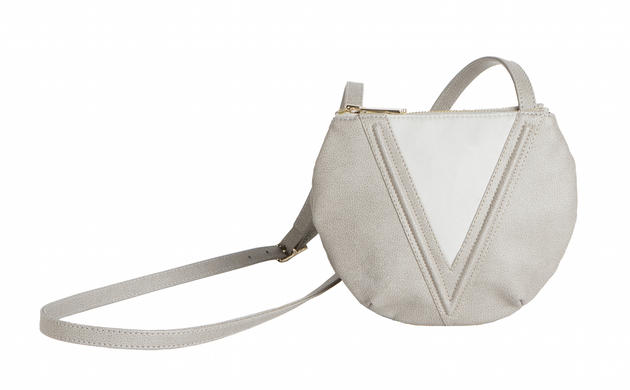At Peaceful Dumpling, we love to share our picks for vegan and eco-friendly style. As a reformed leather bag and shoe lover, I’m especially interested in finding high-quality alternatives that don’t rely on animal skin. I am even the owner of a few pairs of high-shine plastic sandals—they’re not even trying to look like leather!
But I had to wonder—for someone who adamantly prefers glass food containers to plastic Tupperware and insists on using a cloth shower curtain liner, what am I doing wearing plastic? Surely production of these shoes can’t be too good for the environment—and it’s probably safe to assume that wearing them for hours at a time to some extent exposes my body to whatever chemicals they contain. Of course, I did a bit of research and discovered that my doubts about my plastic shoes weren’t off base. In fact, even some of my seemingly less plasticky vegan accessories may be cause for concern as well.
By now, we’re well aware that the leather industry is responsible for an array of environmental and ethical sins. The tanning chemicals used on rawhide may include hydrogen sulfide and ammonia, which are linked to respiratory and nerve damage, among other health ills, and the processing of leather can leach chemicals into the environment. Of course, before this all begins, an animal must be slaughtered (sometimes via the meat industry), which is enough to keep us away from leather products, scary chemicals aside.
But the most widely available vegan leathers may not be much better as far as. My plastic shoes, for example, are probably polyvinyl chloride (PVC) based. PVC produces dioxins, highly toxic chemicals linked to developmental disturbances. Although PVC doesn’t fully break down (a bad thing in itself), it releases micro-particles that, which can be ingested by animals, and phthalates, which are endocrine disruptors. No good.
Likewise, polyurethane (PU)-based products may not be so safe, either. To create polyurethane leather, microfiber particles are layered and pressed together using large metal rollers. PU leather can be imprinted with leather-like textures (like grain or suede). The pressed microfiber is treated with a chemical solution to seal it into a single layer. This solution may contain dimethylformamide and acetic acid, both of which have serious health side effects for the people producing the material, from cancer to eye and skin damage. Although some brands describe their PU leather products as “eco-friendly,” there’s a good chance this is just some clever green washing. Aside from my unabashedly plastic shoes, the rest of my vegan leather accessories are probably made from this material. *Eye roll* It’s cheap to produce—but designers can stick a big price tag on it—and it can be made into just about anything, so PU leather is everywhere.
Fortunately, there are some alternatives to conventional vegan leather that don’t put such a strain on the environment, the people producing the material, or the people using the goods. Brands like Viva Creatures! and even Marc Jacobs incorporate leather-like waxed cotton into their chic bags. Materials like sustainable tree bark and cork can also be worked into durable, soft material that can substitute for leather in bags, shoes, and even jackets. Some eco-conscious designers have taken to using recycled PU leather–which is certainly better than newly produced PU leather. Recycled rubber is another interesting leather substitute that could make for some edgy (and durable) products.
Of course, it’s impossible to declare a particular material free of environmental consequences. Each material will have some cost, but we can inform ourselves about the production involved in the various vegan leather options (and maybe just avoid PVC and newly produced PU leather as much as possible—eek!). I’m certainly guilty of impulsive shopping and getting excited about a cute accessory just because it’s not made with animal products, but the research I did for this post reminds me that it’s not so simple. Not all vegan leather is alike and some is no better than real leather, as far as chemical processing is concerned. From now on, I know to research a brand’s materials before plunging in.
Related: Should You Wear “Recycled Leather”?
10 Charitable Fashion Brands Giving Back to Animals
Get more like this—Subscribe to our daily inspirational newsletter for exclusive content!
Photo: Barn Images, Viva Creatures!


